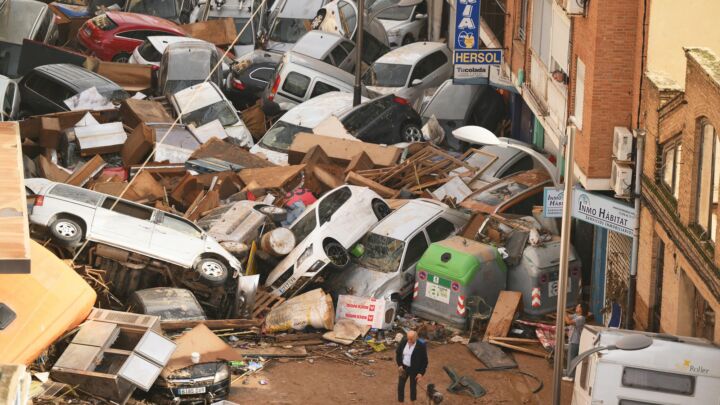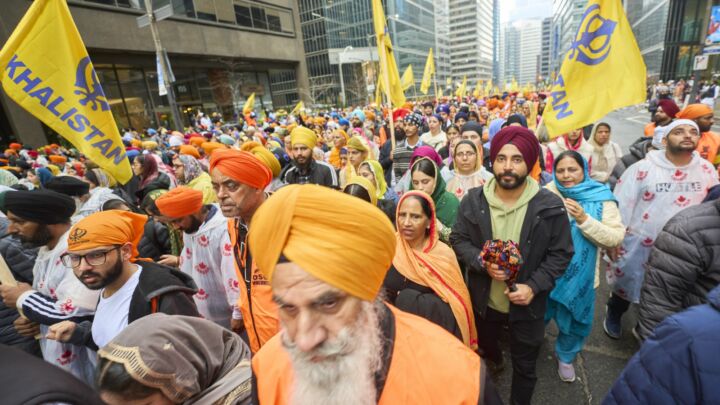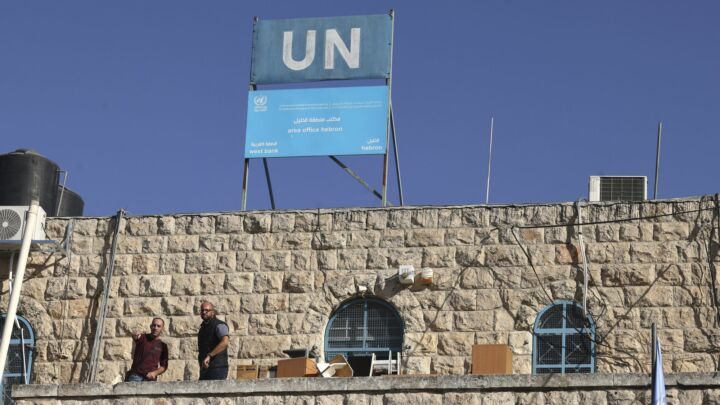Anna Hazare: apostle of political hygiene
James Woudhuysen reports from India on why the middle-class warriors against corruption aren’t so heroic.

Want to read spiked ad-free? Become a spiked supporter.
As I enter the outskirts of Pune, India’s seventh largest city and a major centre of its software and car industries, low, blue-painted walls exhort me: ‘KEEP PUNE GREEN AND CLEAN, CONSERVE WATER, UNITY IN DIVERSITY.’ Then, among the massive, lavishly photographed, hideously clean posters advertising newly built properties for sale and rent, the copyline hits me, unabashed: ROYAL: FOR THE PRIVILEGED FEW.
No wonder tens of thousands of India’s middle classes have lately been out on the streets. But their cause has not been poor housing, or urban infrastructure more suited to the 1950s than to 2011. Led by lawyers and Bollywood stars, they have been protesting the corruption that pervades parliament, the police and the state.
Is that a good thing? Sadly, no. But although the concessions that both India’s houses of parliament affect to have made to this middle-class movement were by no means ‘historic’, the moment is an important one for the country still billed – in some quarters, at least – as the world’s largest democracy.
As it happens, India’s middle class is neither especially privileged, nor – by the standards of Western demography, at least – especially scarce: the elite management consultants McKinsey reckon that the number of households with money in their pockets in India could increase sevenfold, to 89million, by 2025. Hit by inflation (nine per cent, and much worse for food), and unlikely ever to dwell in those Royal apartments, the Indian middle class nevertheless believes that its time has come. Enter the apostle of political hygiene, Anna Hazare.
Hazare, 74, an ex-army man and, inevitably, all kitted out in white, broke a 12-day fast on Sunday morning in front of a crowd estimated at 85,000 gathered at the Ramlila Maidan, a massive playground in New Delhi where Mahatma Gandhi, Hazare’s self-conscious role model, used to give speeches. His reason: in a unanimous move, the major parties in both India’s houses of parliament had finally agreed ‘in principle’ – but without a vote – to his bill for Jan Lokpal, or citizens’ ombudsmen. Among other things, that bill aims to subject the prime minister and all layers of India’s bureaucracy to the surveillance of independent, impartial ombudsmen, both at national and at state level. No fewer than nine separate drafts of the bill will now be put before a parliamentary committee.
The debate about Hazare has been tangled. On the one hand, parliamentarians have rushed to insist on the supremacy of elected representatives against a man who has never run for office – a principle one would more readily agree with were those same representatives not so transparently corrupt themselves. On the other hand, critics have attacked Hazare’s followers as hostile to India’s Muslims, and to its dalits, or untouchables – an allegation of some substance, though one easily undone when two young girls, one Muslim and one dalit, were chosen to give Hazare coconut water and honey after 291 hours’ fasting.
Neither side has it right. In reality, the rise of ‘Team Hazare’ and its followers is almost, though not entirely, a media creation. The Times of India, the country’s leading newspaper, launched its own online anti-corruption campaign, gaining four million votes, and on Sunday proclaimed, in a banner headline notable for its ombudsmanlike independence and impartiality, ‘ANNA WINS IT FOR THE PEOPLE’. Indeed, things got so bad with the media that even the Times was forced to report, on the very next day, that media-studies buffs had ticked off as ‘biased’ television channels (not newspapers, of course) for airing two weeks of wall-to-wall propaganda in favour of Hazare.
We in Britain are familiar with this kind of phenomenon. From BBC television reporter Martin Bell OBE, who became an MP in 1997 after campaigning against local Conservative Neil Hamilton, through to the media furore about corruption in the Metropolitan Police today, the media love nothing better than to highlight the illegitimacy of individuals and institutions even less credible than they are. And, once more, we in Britain know the result of this kind of sanctimony: a depoliticised public domain, where accusations around sleaze, backhanders, expenses and all the rest eventually come to haunt the accusers themselves.
There is a second aspect of the Indian events that mirrors unseemly developments in the West, just as much as those slogans on the blue walls in Pune ape the mantras of Western environmentalist non-governmental organisations. Heading the government in India, the Congress Party finds that its chief, prime minister Manmohan Singh, is even more ineffectual than Barack Obama, Angela Merkel, Nicolas Sarkozy, Silvio Berlusconi, David Cameron and Japan’s five prime ministers of the past five years. As for the main opposition party in India, the conservative and Hindu nationalist Bharatiya Janata Party (BJP), it is run by people about as adroit as the US Republicans or our very own Ed Milibore. With these kinds of leaders, it’s little surprise that a septuagenarian poseur like Anna Hazare can gain traction.
There is however one more, specifically Asian feature of the events in India, one that confirms that they are not entirely the creation of the media here. In China, the recent carnage caused by a collision of sleek high-speed trains led to an obvious state cover-up, middle-class outrage and then turmoil within the Communist Party leadership. In India, too, a slower but still unmistakable modernisation of the country is creating fractures, as a rather different state regime struggles to catch up with some of the social products of its success.
For the present it is India’s middle class that is making the running in these conflicts, not least because it has a little money and a big godfather in the media, which, unlike China’s media, don’t face ruthless state control. Equally, while China has seen a big increase in working-class struggles in recent months and years, a strike called in favour of Anna Hazare in the strongly Hindu north-Indian state of Uttarakhand closed schools and colleges, but not public transport.
So the anti-corruption movement in India is a middle-class affair. By itself, that need not invite ridicule; but what should inspire alarm is the politics of Hazare.
Indians are not being asked to choose, as finance minister Pranab Mukherjee has suggested, between democracy and ‘mobocracy’. If a mass movement’s demands are right, then parliament can go hang. The problem with Hazare is that he leads, not a mob, but an overtly anti-political current of the sort that is all too fashionable in the world today. Worse, it is a current that wants to impose yet more appointed, unelected bureaucrats to run the country, on top of those who do so already. Again, things have got so bad that BJP leader Arun Jaitley was forced to register in parliament his doubts about one idea that has been mooted: that citizens’ ombudsmen be allowed to tap phones, right up to the level of the prime minister.
After his fast was over, Anna said that he would now struggle for the right to recall dodgy elected representatives, as well as the right to rule out dodgy candidates for election. One can only guess who will do the recalling and ruling out.
It is all bad news. Yet, quite separately from Hazare’s histrionics, there is something else that the anti-corruption movement points to, even if it does not reflect. While India’s government and state are paralysed by inaction, another force is on the move – though demographically, and not yet ideologically. As the sages at McKinsey have noticed, India’s population is younger than China’s; so much so, that perhaps 250million Indians will enter the country’s workforce over the next 10 years.
Not all members of that cohort will become part of the working class, for many will toil in the countryside. Yet in terms of social weight, at least, the working class will more and more be a force to be reckoned with.
The future – perhaps that is really what both parliament and Anna Hazare’s media stage army are so upset about.
James Woudhuysen is author, with Joe Kaplinsky, of Energise! A Future for Energy Innovation, published by Beautiful Books. (Buy this book from Amazon(UK).) He is also a contributor to BIG POTATOES: The London Manifesto for Innovation.
Celebrate 25 years of spiked!
A media ecosystem dominated by a handful of billionaire owners, bad actors spreading disinformation online and the rich and powerful trying to stop us publishing stories. But we have you on our side. help to fund our journalism and those who choose All-access digital enjoy exclusive extras:
- Unlimited articles in our app and ad-free reading on all devices
- Exclusive newsletter and far fewer asks for support
- Full access to the Guardian Feast app
If you can, please support us on a monthly basis and make a big impact in support of open, independent journalism. Thank you.






Comments
Want to join the conversation?
Only spiked supporters and patrons, who donate regularly to us, can comment on our articles.